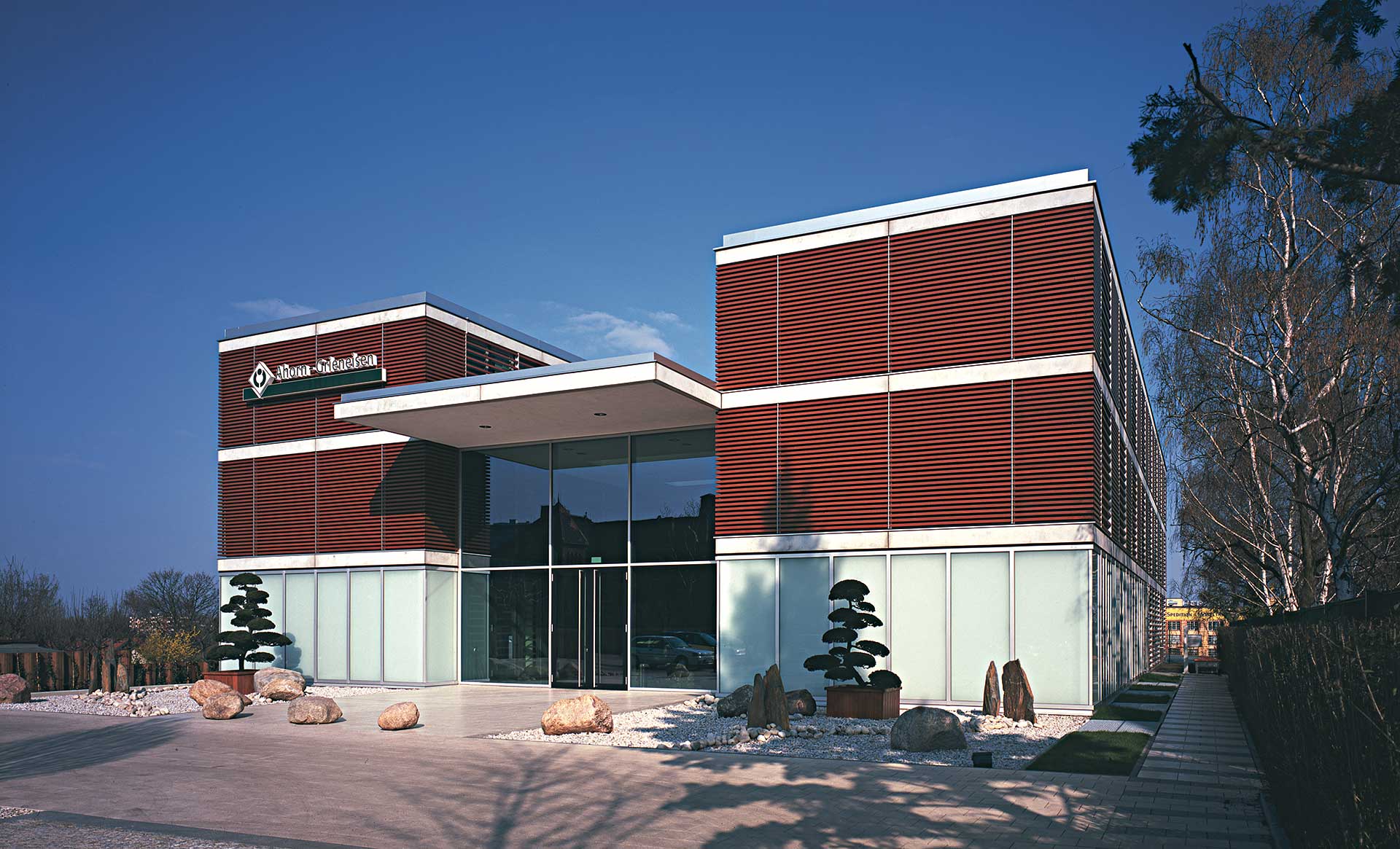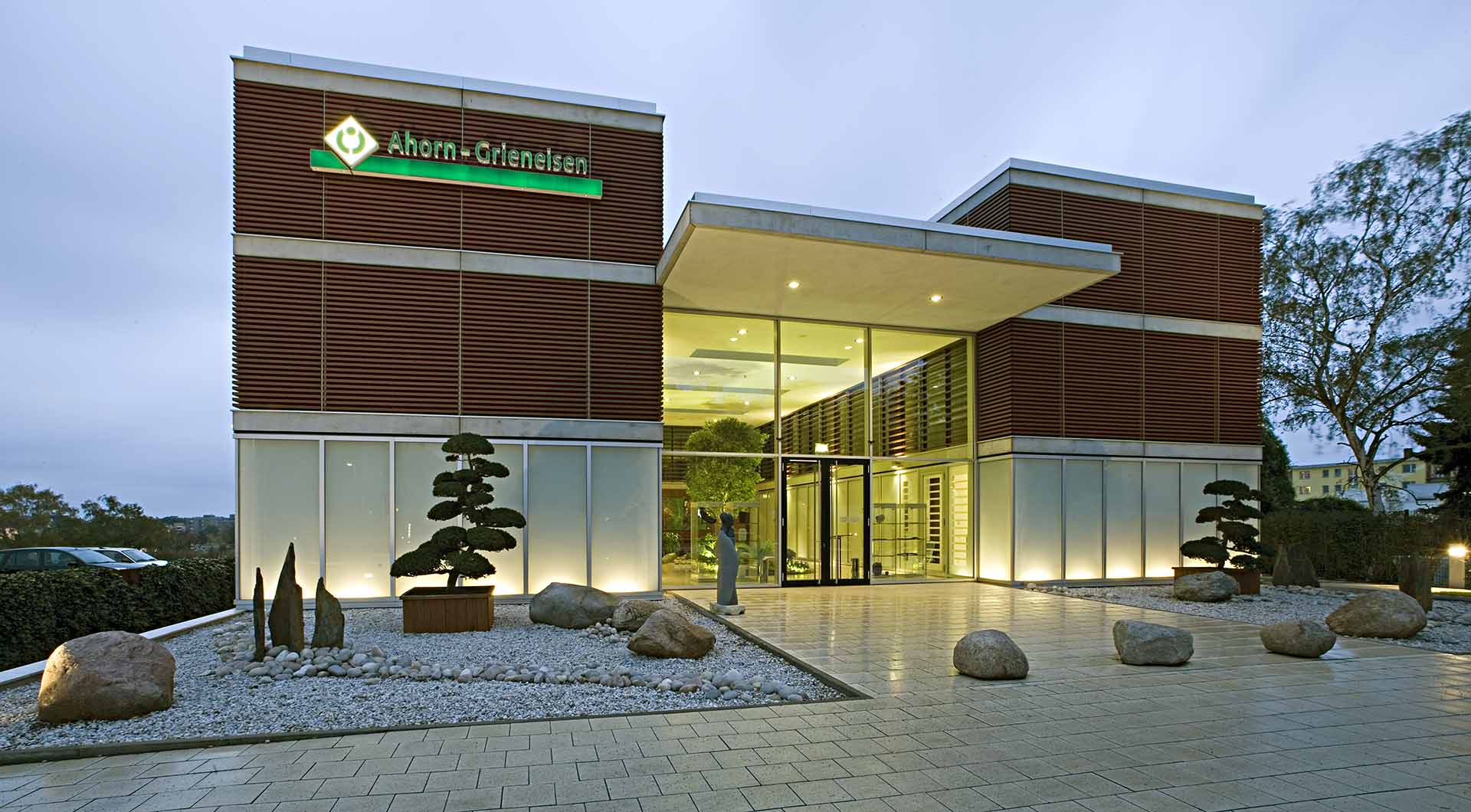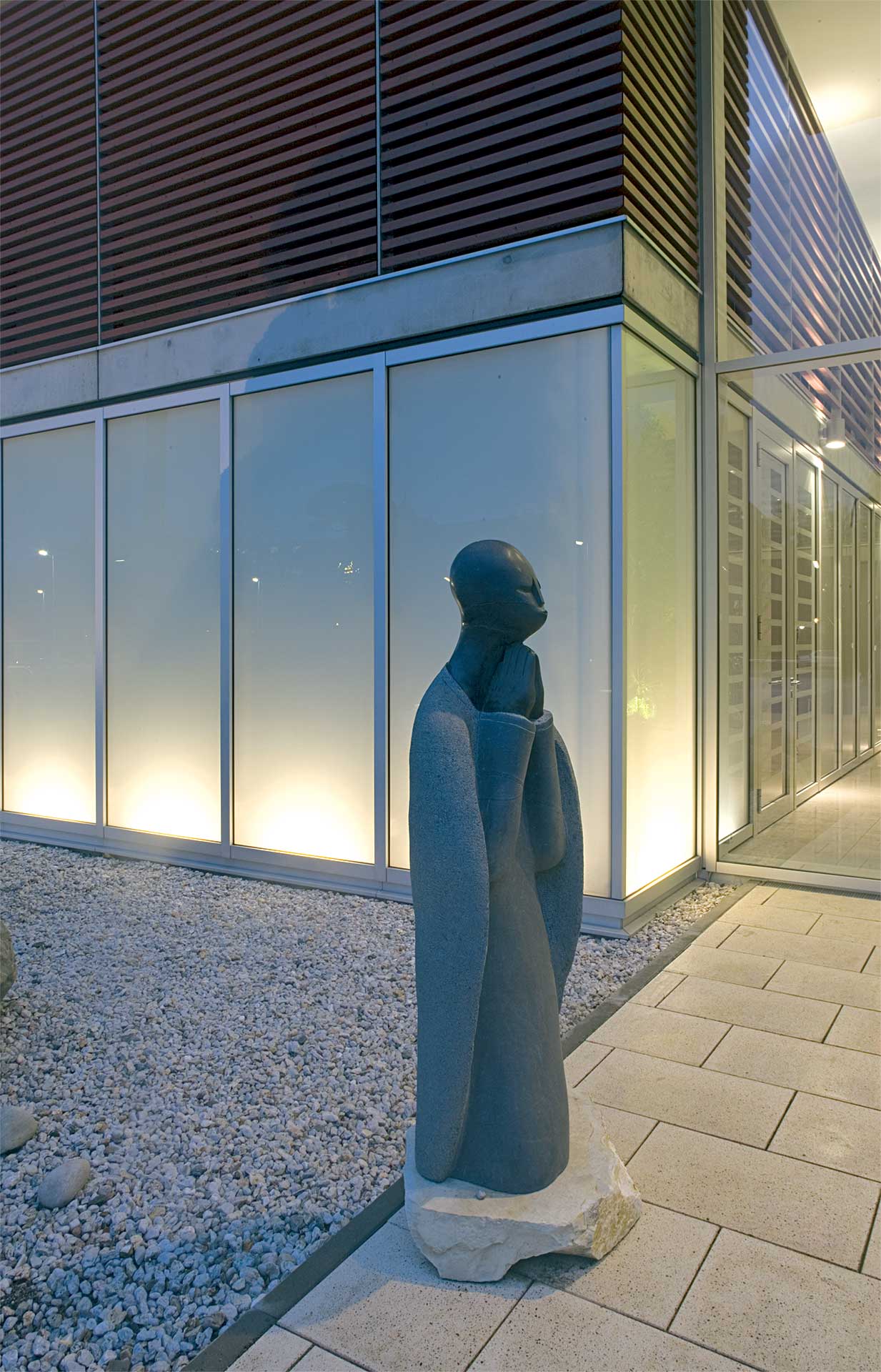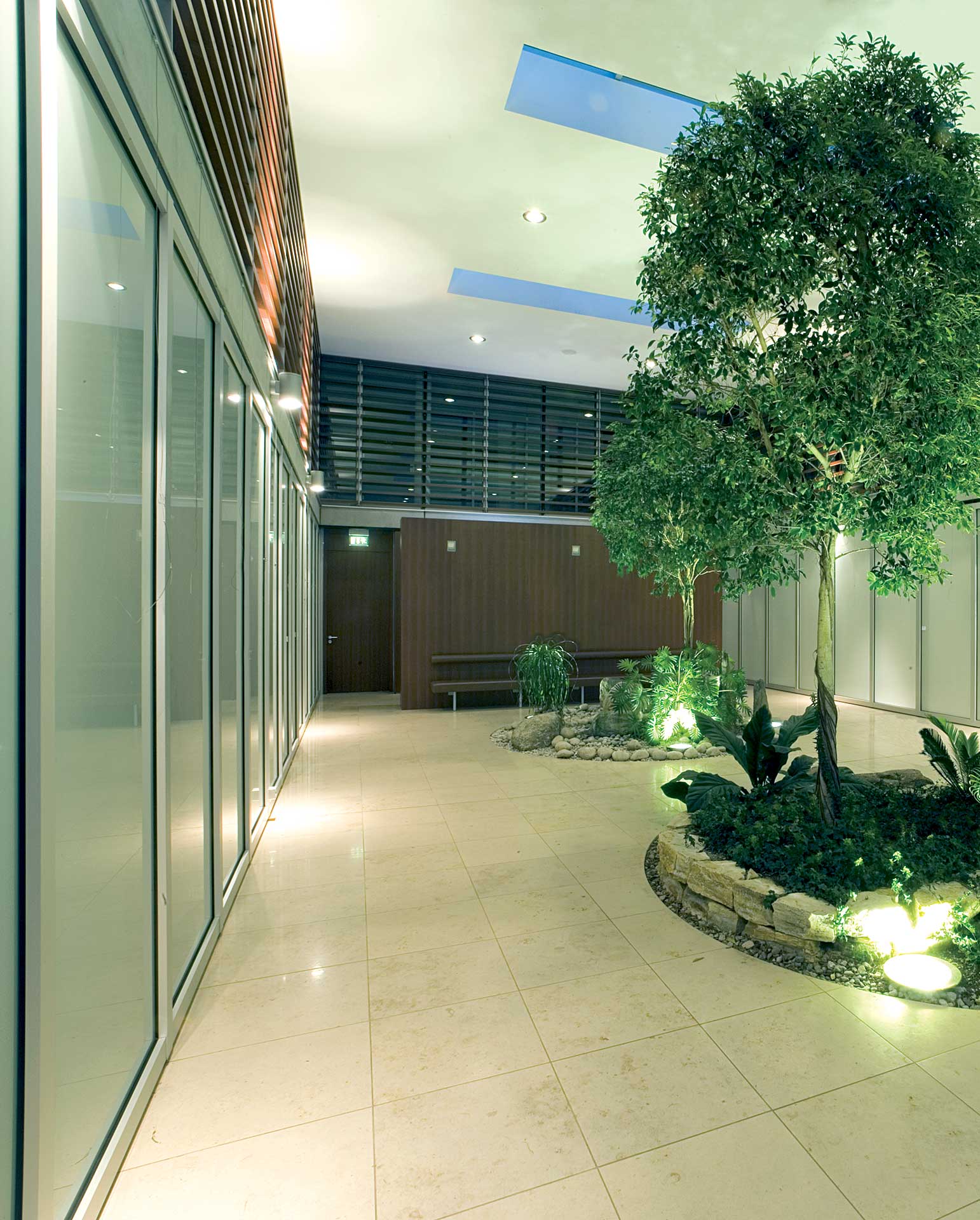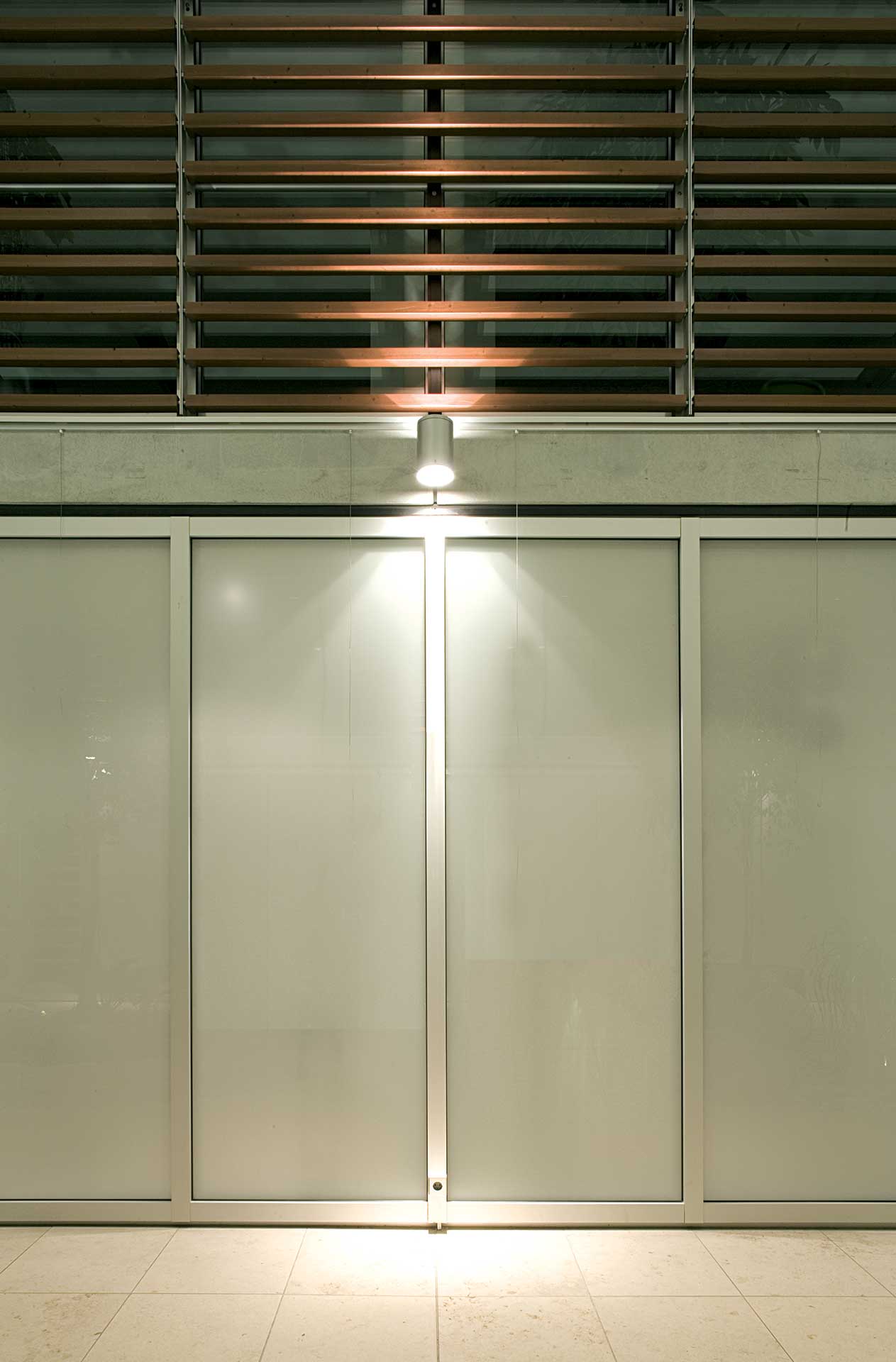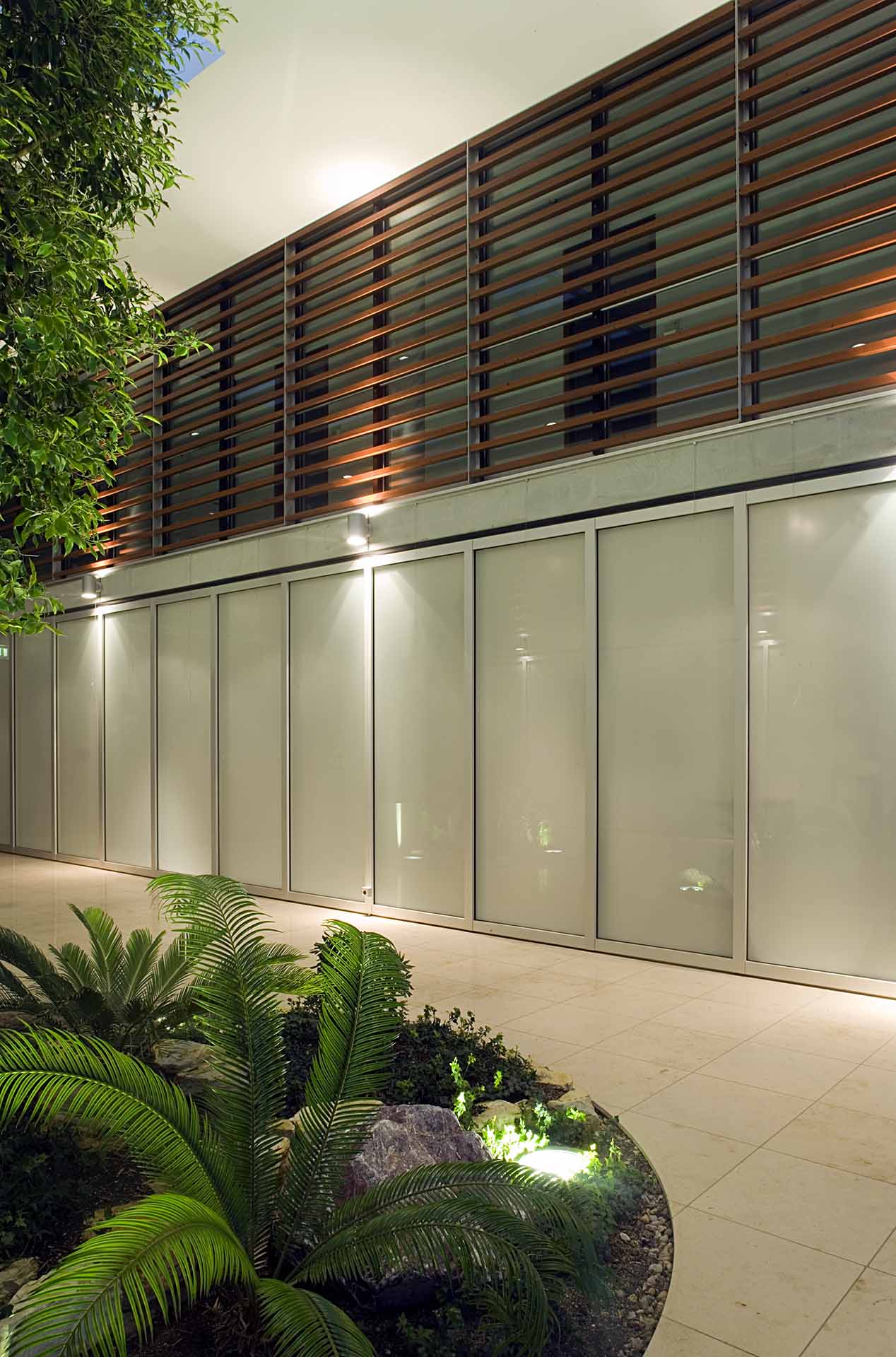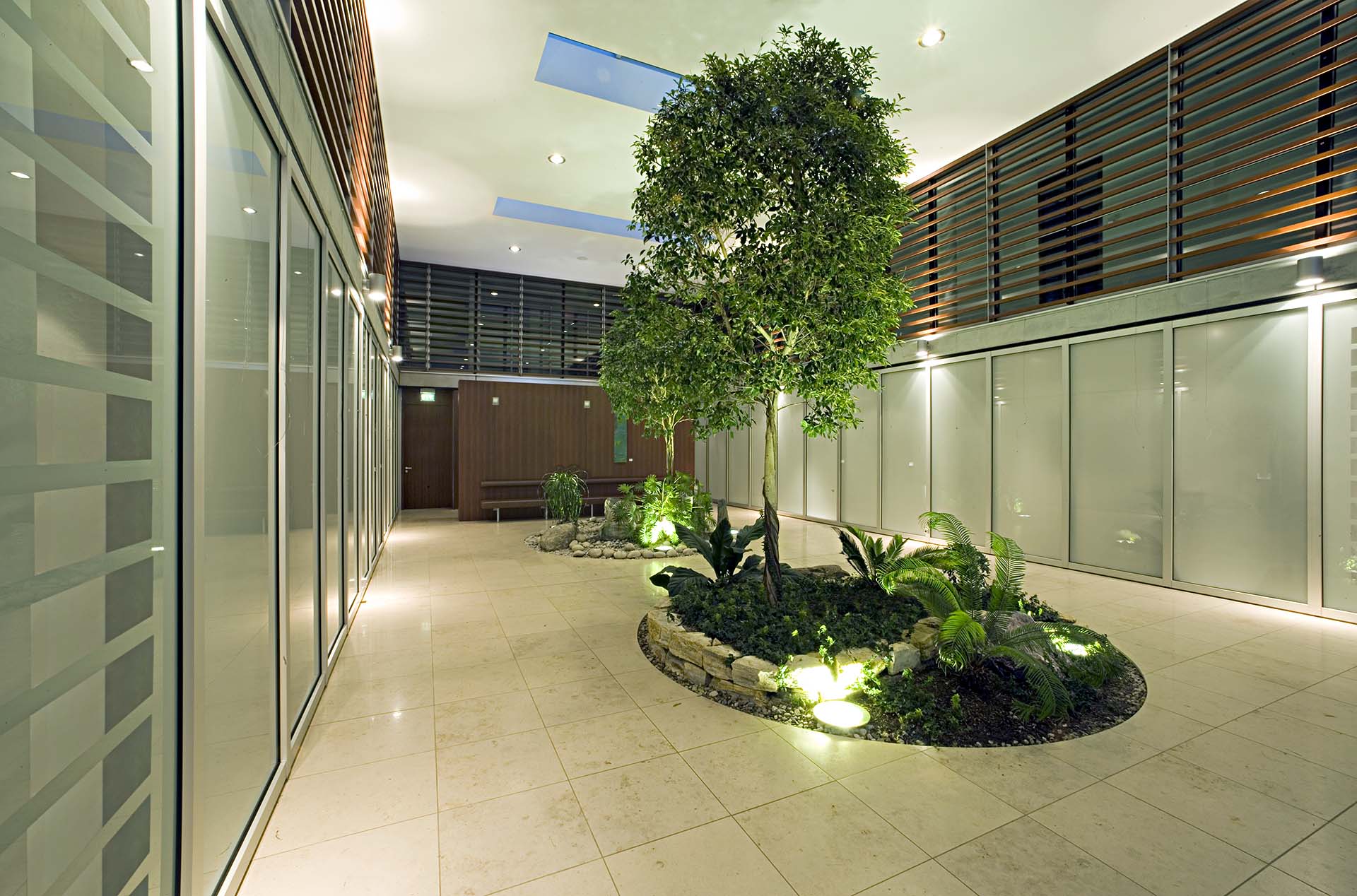The building occupant Ahorn-Grieneisen AG of the “Haus der Begegnung” (house for encounters) in Berlin brings up a new, holistic approach for the final encounter of the deceased and their family members. For realization of such a sensitive topic, the architects have varied the theme of light combined with bright, warm coloring, puristically reduced building materials, and consistent dimensions and structures. This causes the confrontation with the inescapable to be a sensuous-meditative experience for building visitors.
The funeral service provider Ahorn-Grieneisen AG who enjoys a long tradition and is subsidiary of IDEAL insurances intended with the “Haus der Begegnung” in Berlin to create a forum for a new and open form to deal with the death. Architecture and furnishing should emphasize this concept by using much light as well as bright and warm coloring to give the house an atmosphere that reduces fears and inhibitions. At the same time the building has to satisfy a multitude of functions in conjunction with the holistic concept of the occupant: reception area, hall for funeral services, intimate rooms for personal farewell as well as administration, service, and storage areas required furnishing; moreover, the proposal of a 24-hours service called for night illumination.
A complex variation of light and closeness with essential elements defined in the façade and continued inside leads to realization of these requirements. Seen from the front, a large-surface glazed entrance façade cuts two symmetric building elements; both top stories of which – boarded with horizontal wooden lamellas – seem to rest “smoothly” on the satin-frosted glazed belt of the ground floor façade. Exposed to light and with grand gesture the entrance zone guides into a glass covered and naturally planted atrium located in the front center of the complex. This provides access to all adjacent functional areas in the building. Transparent and satin-frosted glass, filigree aluminum profiles, wooden lamellas, and fair-faced concrete – materiality, forms, and formats of the interior do intelligibly reflect the different variants of façade design.
Façade design The three- and four-story-high façade is structured in stories by horizontal belts made of precast concrete parts that are suspended thermally apart. Horizontal wooden lamellas made from thermal wood (fir) are factory-designed as grids on black, vertically arranged construction profiles. In front of the surface-low aluminum windows hidden by the lamellas in parts of the façade, those wooden lamellas have been omitted in turns. The omission of every second lamella leads to sufficient natural light inside and at the same time the rooms beyond the glazing get efficient static protection from the sun. This way the exterior view shows the uniform materiality and simplicity of a wooden façade combined with the good thermal properties of solid outside walls. Significant visible parts of the ground floor have been clad with satin-frosted surface glazed elements in aluminum frames as cold façade in front of a white covered thermal insulation. The glass panels are backlit indirectly, what gives both buildings along the entrance hall a levitating effect in the evening.


